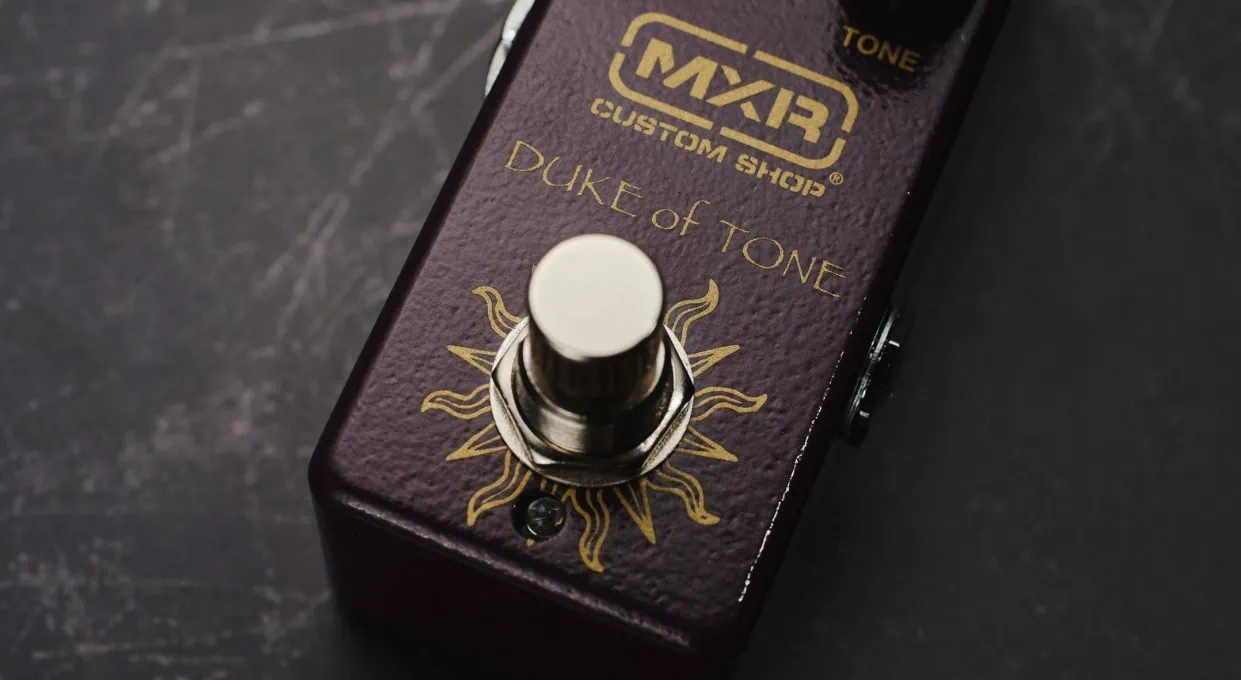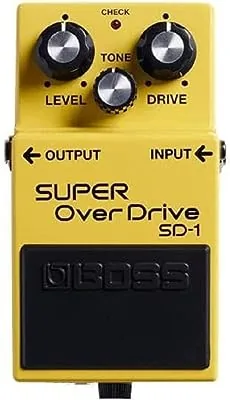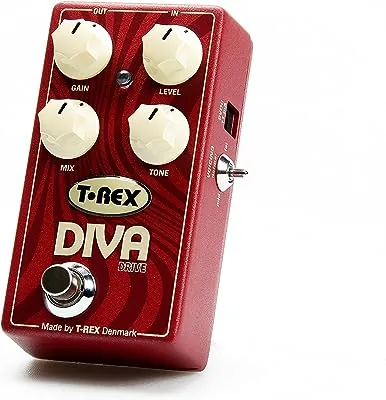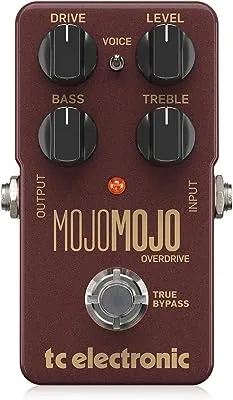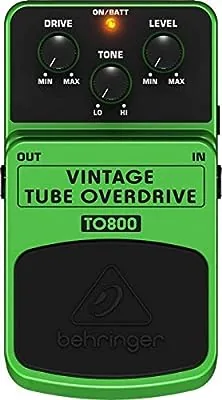Guitarists are very picky when it comes to certain pieces of gear. Overdrive is one of them.
Yes, there are almost as many holy grails, copies, originals, and outcasts in the overdrive pedal world that options are virtually endless. Furthermore, I swear by my Tube Screamers just as much as the next player swears over his or her Klon copy or Blues Driver.
The thing is that with this number of options and no right or wrong, it is impossible to make a decision when you’re looking for a budget overdrive pedal.
Well, worry not, yours truly has been trying overdrive pedals for decades and has gone through some of the most common models. Although my heart and soul belong to my Tube Screamer, I’m here to tell you which the best options on the market are and why.
Let’s spice your tone up, shall we?
Top 3 - Cheap Overdrive Pedals
Preview | Product | Price |
|---|---|---|
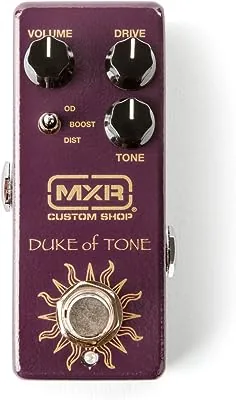 | ||
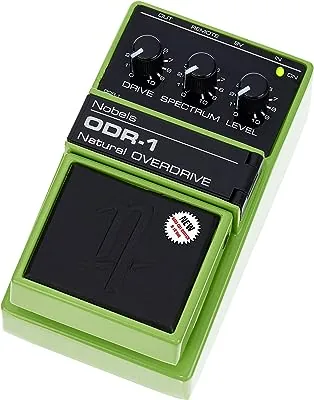 | ||
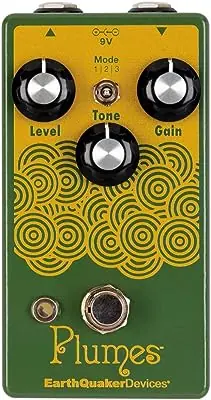 |
It’s overdrive time! And here are some affordable overdrive pedals that I found to be excellent in my extensive testing.
Best Overdrive Pedals Under $200
1. MXR Duke of Tone
Analog Man’s King of Tone became quite a legendary pedal in the past couple of decades. I mean, it’s not a Klon Centaur that could cost you several thousand dollars, but it has seen many stages at the feet of some of the most renowned guitar players on Earth.
If you order a completely handmade King of Tone today, you’ll very likely receive it in five years (that’s how long the waiting list is). But you don’t need to be kept waiting for half a decade because Analog Man joined forces with MXR to bring you the Duke of Tone, a small-sized pedal that holds the original circuit that made the King of Tone so famous.
Now, you might know that the King of Tone is a pedal with two switches and six knobs. Well, the Duke of Tone is closer to the Prince of Tone, a pedal that takes the overdrive circuit of the KOT and adds a distortion mode to it.
Let me tell you that this pedal seriously rips. I tried it in the three modes and it’s uncanny the way it reacts to your picking style as if it was a tube amp instead of a pedal on your board.
Indeed, you can go from clean to dirty by just strumming harder. Moreover, the clean mode stays clean most of the time while the OD mode adds some nice grit and midrange to your signal. Finally, the distortion mode is not super-heavy but feels natural and organic, reacting to your pick attack and adding natural harmonics to the signal.
Oh, and the whole time I played through the pedal, the low end got tighter than without it. Let me tell you this pedal sounds so amazing you won’t want to turn it off. Perhaps, the only caveat is that it’s kind of small to maneuver knobs and switches while playing live. On the other hand, it takes up very little space on your board.
2. Nobels ODR-1
To be completely honest, I hadn’t heard a word about this pedal before this testing. Later I learned it’s kind of a legendary pedal that has been around since 1991 when it was invented by Bernhard Kurzke, a German inventor who was trying to emulate the sound of his cranked Fender Bassman.
Why is this story important? Well, simply to say that this pedal is green but a contemporary to the famous Tube Screamer and it doesn’t follow the same schematics or circuit; it’s entirely a wonder of its own.
Now, what you get from it is a pure, organic, highly sensitive to pick attack overdriven tone that can accommodate any guitar delivering sweet midrange tones. Speaking of which, the “Spectrum” knob, which is like the Tone knob in every other overdrive pedal in the world modifies only bass and treble but leaves the mids untouched which translates into presence and natural overdrive in every setting.
Another cool feature the ODR-1 has is the bass cut switch inside the battery compartment. That was great to cut back some of the extra lows from my mahogany-body Gibson Les Paul but was a little too much for single-coil guitars which sounded a little stale and thin.
This pedal is a killer option for those who love Tube Screamers and also for those who hate them because it’s a very natural, expressive, and sensitive pedal that also goes well with hotter pedals.
The Nobels ODR-1 was a wonderful surprise, if you haven’t already, it’s high time you try one out.
Best Overdrive Pedals Under $100
3. EarthQuaker Devices Plumes
Let me start by saying that this overdrive pedal is green. That, in overdrive pedal land, can mean only one thing: Tube Screamer copy. Well, if you’ve been following the adventures of EarthQuaker Devices, you’ll know they’re not making clones of anything but taking all designs to the limit to come up with something new.
In this vein, what these fine folks at EarthQuaker did was to take what they liked the most about the original TS-808 circuit and none of what they disliked.
I’m lucky enough to own not one but two original Tube Screamer pedals and so I did the test, and the results were amazing. On one hand, the Plumes is clearer, more open, and has twice the gain the original design has. This makes it more versatile because you can go from a subtle bump in the mids to full-on, rock-and-roll-approved tones with enough gain to drive single coils or humbuckers.
Although it sounds amazing as an overdrive, this pedal is, by no means, a one-trick pony. With the 3-way switch, you can choose between a symmetrical LED clipping in mode one (the “dirty setting), a very clean op-amp boost in mode two that’s great to push an amp into subtle overdrive, and the asymmetrical silicon diode in mode three that’s the closest to the original TS-808 tone with more clarity and punch.
I had lots of fun with this pedal driving my Fender Deluxe Reverb ’65 reissue and my Sovtek MIG-50 head. Besides being very versatile, it’s built like a rock and occupies little space in the pedal board.
4. Boss SD-1 Super Overdrive
Introduced in 1981, the SD-1 by Boss is the perfect pedal for those who need a reliable, road-worthy pedal with an infallible tone and some sounds to choose from.
To begin with, I loved this pedal the best when coupled with other overdrive pedals or the amp a little pushed. Nevertheless, let me tell you that it also is a great stand-alone pedal. When you push the gain knob to full, you can hear a little high-pitch tone that is soon to become feedback and muddies the tone a little.
So, if you keep the Gain knob between 3 and 9 o’clock, you’ll be in overdrive heaven.
Also, the Level knob is very important because it interacts with the Gain knob. The more you push the Level knob, the more you can push your amp’s tone. Therefore, if you crank the Level knob and set the Gain knob at noon, you’ll get some creamy overdrive tones that are clearer and sparkier than cranking just the Gain knob.
Speaking of spark, the Tone knob is good to accommodate different guitars since it can tame the shrillness of a Tele or Strat but add lively mids and highs to a humbucker-equipped guitar.
I played with it for a while and all I could get were usable tones from this pedal. Plus, it’s built like a tank like every Boss pedal, and finally, it has an irresistible price tag.
Trying this pedal before buying is a must.
5. T-Rex Diva Drive
This overdrive pedal by T-Rex is a revolutionary approach because of one single knob that nobody seems to have thought of. This groundbreaking addition is the “Mix” knob that determines the amount of clean signal the resulting sound has. This is not at all a common knob in an overdrive pedal, because that’s what you use the “Gain” knob for regularly.
But with the Mix knob, this pedal allows you to retain your guitar and amp’s character and tone while adding a small amount of dirt to the signal when you have your mix low. By increasing the Mix knob, you add some of the pedal’s color and grit to the signal.
For example, if you’re a blues player, or like old-school rock and roll, then the great thing about this pedal is that you can dial exactly the level of snap, low-end, and dirt you want while every note you play comes across crystal clear.
Furthermore, the Diva Drive comes with a three-position switch on the side that gives you the option of enhancing the low-end adding fatness to the signal or increasing the mids turning the pedal into a closer specimen to a Tube Screamer. The middle position bypasses the switch completely.
Finally, let me tell you that this pedal sounds great on its own and can also be a middle ground in your pedal board when you mix it with a heavier distortion pedal.
6. TC Electronic MojoMojo
The TC Electronic MojoMojo is the company’s effort to make an amp fit inside a small box. Yes, from the bass and treble knobs (quite like you would find in an amplifier) to the interaction between the level and the gain knob, you can use this pedal as if it was the front of your favorite amp.
So, to begin with, the MojoMojo is very organic and reacts beautifully to your pick attack just like a tube amp would. Also, the treble and bass knobs allow you to take out from the signal everything you don’t want while retaining everything you do want.
Overdrive pedals with a single tone knob have a sweet spot but then, the more you lower the highs, the more you add lows. This can be counterproductive because trying to get rid of the shrillness, you bring mud to the mix.
Also in that vein, the “Voice” switch in the middle allows you to retain all the bass response of your initial tone or engage a low-cut filter for guitars with huge low-end or for those who like tuning down below standard tuning.
I was playing with this pedal for a while and, when maxed out (gain and level cranked) it produces sweet, creamy distortion, especially in front of a driven amp. Bringing those knobs down cleans up the tone and gives the pedal nice headroom, enough to play rock and roll or even slow blues.
Finally, I plugged in my Telecaster and it was all about snap and twang but when I plugged in my Les Paul, things got really nasty without touching a single knob. This is a naturally voiced pedal that reacts to your playing and your instrument. Try this out before buying an overdrive because the construction quality exceeds the price tag by far.
Best Overdrive Pedal Under $50
7. Behringer TO800
This Behringer T0800 is another green overdrive pedal, therefore, it’s a pedal that follows the Tube Screamer tradition.
Yet, the overall shape of the pedal and the switch type is closer to a Boss pedal than to the real thing. I’m afraid that tone-wise, this pedal has some shortcomings that put it into a different category than most Boss pedals and certainly far from the real Ibanez TS-808.
To begin with, there’s a small hiss sound that’s ever-present and a high-pitch overtone that’s very hard to get rid of.
Other than that, the pedal sounds good at making your signal a little dirtier and louder, but the definition department is asking for help all the time. I tried going for a pure boost setting with the drive in zero and the level maxed out and that was the setting I liked the most.
Nevertheless, this pedal can be the perfect entry door to the world of overdrives because it costs half of what the competition does, and beginners, hobbyists, and aficionados can get some real overdriven tones without breaking the bank.
For seasoned players, it might be a little too noisy, thin, and cheap in terms of sound.
Mini Overdrive Usage Guide & Tips
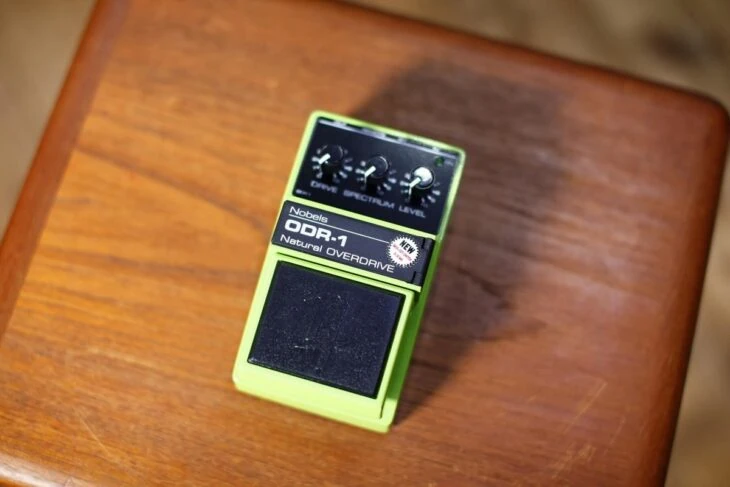
What is an Overdrive Pedal Good For?
This is the first question I think we have to get out of our way. An overdrive pedal can fulfill three main tasks:
As a Boost
Sometimes, I want to have just a little almost-clean push when I go into a solo. You can think of it as something to compensate for my impostor syndrome and you would be right: nothing destroys insecurity like gain.
But engaging an overdrive pedal to go on a solo is also a great way to add midrange to the signal. Midrange cuts any mix, so for this setting crank the volume or level knob and leave the drive knob below 9 o’clock.
Proper Overdrive Chores
The second use is doing proper overdrive chores. These are coloring the signal, affecting tone, and adding a little bit of dirt to the signal. This is great to simulate the natural, organic breakup of a valve amp at bedroom or café volume.
Also, it can be a good way to play with the tamed-down overdrive you’d use for Rolling Stones tunes or soft blues. For this use, the level knob should be where it matches your clean sound and the drive between 0 and 3 o’clock.
Overdrive + Overdrive = Distortion
Finally, the third use is to bring an amplifier or pedalboard into soaring distortion by piling up small drive sources.
For example, you can have a valve amp breaking up naturally with a sweet overdriven tone and use an overdrive pedal to bring it to distortion without adding any mud to the signal. You can also do this by stacking two overdrive pedals together or an overdrive before a distortion pedal.
For this use, you should experiment with the settings until they match the tone you hear in your head and the source signal.
The Tale of The Mids
Midrange, for me and the rest of the guitar players in the world, is our place of comfort, our realm. Yes, the midrange is exactly where we get the most out of our instrument.
An overdrive pedal like the Tube Screamer or the Nobles ODR-1 focuses its action on that portion of the EQ, and thus, can help you enhance those mids and take your guitar tone to the forefront of any mix live and in the studio.
Leaving It on, A Common Trick
I’m getting a little personal here because this is exactly what I have been doing with my TS-9 for over a decade now. I never turn it off, it’s the basis for my guitar sound and I feel a hard drop in the midrange whenever I don’t see its red light on.
Try this out, I have the level at noon, drive in zero, and the tone knob at around 10 or 11 o’clock. Leave it on with those settings for an entire gig and you might just join our cult.
Can I Use an Overdrive and a Compressor Together?
This is a common scenario, especially for players who play neo-soul, funk, or any other musical style that requires a pristine-clean, percussive guitar tone. Although there’s no right or wrong in guitar playing or tone pursuit, you’d be compressing your guitar twice and losing some of the natural dynamics of your instrument in the way.
The best way to have the best of both worlds is to alternate between the two depending on the song.
Finally, you can always use one of them to go into your soaring solo or try both on to tempt mayhem to join the stage!
The Bottom Line - It’s Normal to Change Tone Every Now and Then
This is something important to address because it’s happened to me and to every other guitarist I know: your ears evolve, your tone preferences, and your taste change.
For example, friends of mine who grew up playing heavy metal have now gone into the jazz world and traded that dual-humbucker-with-Floyd-Rose Super Strat for a big hollow-body guitar.
The quest for the perfect tone never ends and when you think you found the perfect overdrive pedal, you’ll play it for months, years at the most, and then another one will come along.
Meanwhile, enjoy the sonic journey.
Happy (overdriven) playing!

